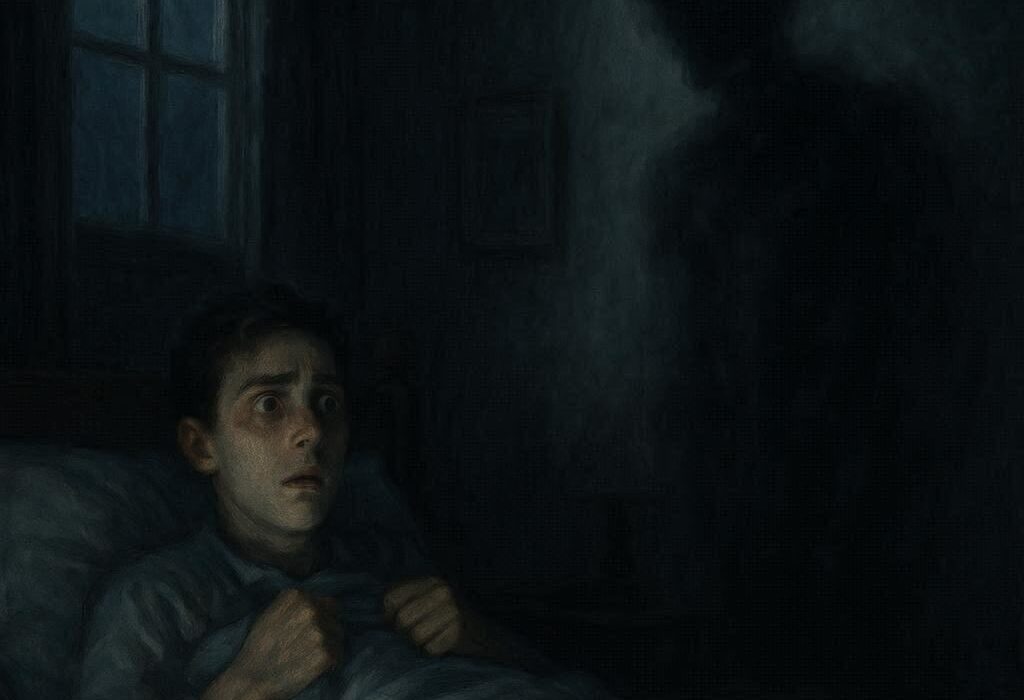It begins small. A little boy drops a glass and blames the cat. A teenager says she studied for the test, but didn’t. A man tells a friend he’s fine, even though his heart is broken. A woman tells her boss she’s on her way—though she’s still in her pajamas.
Deception weaves its way through everyday life. We do it to avoid shame, to save face, to gain advantage, to protect others, to feel safe. Most of the time, we don’t even notice we’re doing it. But beneath the surface, each lie—no matter how tiny or towering—leaves fingerprints on the mind.
To understand deception is to peer into one of the most complex and mysterious aspects of human psychology. It is not just about falsehood. It is about strategy, memory, emotion, fear, control, and even survival.
Lying is ancient. It is wired into our evolutionary history. And though it might be easy to judge liars from the outside, the real story unfolds deep inside the brain.
The Origins of Deception: Born to Lie?
Before we explore the inner workings of a liar’s mind, we must face a startling truth: the capacity for deception begins in childhood, often earlier than most people expect.
Infants as young as six months have been observed in experimental settings to feign distress to attract caregiver attention. By age two, toddlers can deliberately mislead. At age four or five, children develop what psychologists call theory of mind—the understanding that other people have beliefs, desires, and knowledge different from one’s own. This milestone is crucial for intentional lying.
The emergence of lying coincides with cognitive development. To lie, a child must juggle multiple mental tasks: invent a story, remember what’s been said, suppress the truth, and anticipate the reaction of others. It’s a kind of mental juggling act—and not a simple one.
Ironically, a child’s first lie is often a sign not of moral decay, but of mental sophistication. It marks the point where imagination, memory, and empathy collide.
What Happens in the Brain When We Lie?
Telling the truth is easy. It’s a direct retrieval of memory. But lying? That’s mental gymnastics.
Modern neuroscience offers extraordinary tools for peering into the brain as deception unfolds. Functional MRI (fMRI) scans and EEG readings have shown that lying activates multiple brain regions, including the prefrontal cortex, anterior cingulate cortex, and parietal lobes.
The prefrontal cortex is the executive center—the brain’s CEO. It handles planning, decision-making, and impulse control. To construct a believable lie, this region must suppress the truth and generate an alternative scenario. The anterior cingulate cortex, meanwhile, manages conflict detection. It lights up when our internal moral compass clashes with dishonest behavior.
This internal conflict is critical. It’s what causes physical signs of stress—fidgeting, sweating, voice pitch changes. It’s also why lying can be mentally exhausting.
But here’s the catch: not all lies feel bad. With practice, people can become desensitized to deception. Over time, the emotional and neurological “cost” of lying diminishes. This is how compulsive liars are born—not in a single moment, but through the slow erosion of conscience.
The Sliding Scale of Lies
Not all lies are created equal.
Some are harmless, even helpful. These are the so-called white lies—the kind we tell to protect feelings or maintain social harmony. “You look great in that outfit.” “I loved your presentation.” “I’m not mad.”
Then there are strategic lies, used to gain an advantage or manipulate outcomes. Politicians, negotiators, poker players—many rely on subtle forms of deception to achieve their goals.
And, of course, there are malicious lies—intended to harm, mislead, or destroy. These lies are heavy with intention and often rooted in deeper psychological dysfunctions, including narcissism, psychopathy, or unresolved trauma.
Understanding a liar means understanding their motive. Was it fear? Gain? Habit? Compassion? Self-image? The psychology of lying cannot be painted with one brush. Every falsehood tells a story, not just about what happened, but about why someone wanted to change the version of reality they shared.
Who Lies, and How Often?
You might think you’re an honest person—and perhaps you are. But research suggests we all bend the truth more than we’d like to admit.
A groundbreaking study by psychologist Robert Feldman found that people lie in about one in every five interactions lasting more than ten minutes. That’s not to say every lie is dramatic. Most are small exaggerations or omissions. But they’re still distortions.
Interestingly, people tend to lie more in certain contexts—job interviews, dating scenarios, social media posts. These are environments where impression management is crucial. We lie to look better, smarter, kinder, more successful.
But there’s a darker truth too: a small percentage of people tell the majority of lies. In one study, just 5% of participants were responsible for nearly 50% of all lies told. These individuals, often labeled prolific liars, tend to have distinct psychological profiles. They’re often more manipulative, less empathetic, and more comfortable with risk.
The Brain’s Emotional Load of Lying
Lying isn’t just a cognitive event—it’s an emotional one.
When we lie, especially about something meaningful, our body responds. Heart rate increases. Breathing changes. Pupils dilate. The body perceives lying as a stressor because it involves fear of detection and the guilt of dishonesty.
This emotional burden is what makes polygraphs (lie detectors) possible, though far from perfect. Polygraphs measure physiological signs of stress, not deception directly. And while they can sometimes detect lies, they’re also vulnerable to false positives. Anxious truth-tellers may be flagged, while practiced liars may fly under the radar.
The emotional weight of lying is also why confessions—real ones—often come with visible relief. The brain, no longer juggling conflicting realities, breathes easier when the truth is finally spoken.
Pathological Liars: When the Truth Becomes Alien
Pathological lying, also known as pseudologia fantastica, is a rare but deeply perplexing phenomenon. These individuals lie compulsively and often without clear motive. Their fabrications are elaborate, dramatic, and sometimes fantastical.
For pathological liars, the boundary between reality and fiction blurs. In some cases, they believe their own lies. In others, they lie knowing the truth, but unable to stop.
Brain scans of compulsive liars have shown increased white matter in the prefrontal cortex. This may suggest enhanced connectivity between brain regions—giving liars an edge in crafting stories and thinking on their feet. But it also hints at a possible structural difference in moral regulation.
Pathological lying often co-occurs with personality disorders, particularly narcissistic, antisocial, and histrionic personality disorders. In these cases, lying serves deeper psychological needs—attention, control, or manipulation.
Lying to Ourselves: The Art of Self-Deception
Perhaps the most profound lies are not the ones we tell others—but the ones we tell ourselves.
Self-deception is a psychological survival mechanism. It allows us to maintain a coherent self-image in the face of conflicting truths. “He didn’t mean to hurt me.” “I’m fine on my own.” “I could quit anytime.” “They just don’t understand me.”
These lies are comforting. They soften pain, blur guilt, and bolster confidence. Evolutionary psychologists suggest self-deception may have offered an adaptive advantage. If we believe our own lies, we become more convincing to others. Confidence—true or not—can be a powerful social tool.
But self-deception is a double-edged sword. It can protect mental health in the short term but distort reality in the long run. It keeps people in toxic relationships. It blinds them to destructive habits. It delays healing.
Inside the mind of a self-deceiver is a hall of mirrors—every reflection distorted just enough to make life feel manageable.
Spotting a Lie: Myths vs. Reality
Think liars always fidget or avoid eye contact? Think again.
Popular culture has filled our minds with myths about how deception looks. But research paints a more complex picture. Good liars often maintain eye contact. They don’t sweat profusely or shift nervously. They can appear calm, charming, and utterly sincere.
What truly differentiates a lie is cognitive load—the mental effort required to fabricate a believable story. Liars may pause more to think. Their stories may lack detail or sound too rehearsed. They may have trouble recalling their lies later. Their emotional expressions may not quite match the content of their words.
But there is no universal “tell.” Lie detection is a skill honed over time, and even trained professionals like FBI agents and psychologists are only slightly better than chance in detecting deception.
Ironically, the best liars are often the ones who believe their lies—or don’t feel guilty telling them. Without emotional leakage, the lie becomes almost indistinguishable from the truth.
Digital Lies: Deception in the Age of the Internet
In the digital era, lying has taken on new forms. Social media profiles are curated façades. Online dating apps are filled with selective truths. Deepfakes and AI-generated content blur the line between reality and illusion.
Online anonymity emboldens deception. People say things behind screens they would never say face-to-face. Cyber deception includes catfishing, identity fraud, fake news, and phishing scams. The consequences range from hurt feelings to financial ruin.
What makes online deception especially insidious is its scale and speed. A lie can reach millions in minutes. False information spreads faster than corrections. Our brains, designed for face-to-face interaction, struggle to navigate these new digital landscapes.
This raises urgent ethical and psychological questions: How do we cultivate honesty in a world of filters and avatars? What happens to our trust in reality when everything can be faked?
Can Lying Be Good?
Despite its bad reputation, lying is not always morally wrong. In some cases, it is even necessary.
Consider the doctor who softens the truth to ease a dying patient’s fear. The friend who hides a surprise party. The freedom fighter who deceives a regime to protect others.
Psychologists call this prosocial lying—deception motivated by kindness, protection, or social harmony. In fact, studies show people prefer to be lied to in certain situations, especially when the truth would cause unnecessary harm.
Ethical philosophers wrestle with this dilemma. Is it better to lie and protect, or tell the truth and hurt? The answer often depends on context, intention, and consequence.
The Future of Lies: AI, Neuroethics, and Truth Engineering
As neuroscience and artificial intelligence evolve, we may soon face radical new questions about deception.
Will brain scans become advanced enough to detect lies reliably? Could we engineer honesty through brain stimulation or genetic editing? Could AI systems detect micro-signals of deception that humans miss? Should they?
The future of truth may not rest on human conscience alone. It may become technological, regulated, even commodified.
But until that day, the human mind will remain the ultimate battleground of honesty and deceit—a theatre where truth and fiction play out in equal measure.
The Mirror in the Mind
In the end, to lie is to be human. We do it out of fear, love, ambition, and pain. We do it to survive. To belong. To shape how others see us. But every lie, big or small, leaves a trace inside the mind.
It demands memory, emotional control, ethical negotiation. It shapes our character and reveals our values.
The psychology of deception is not about villains and saints. It is about the fragile, fascinating dance between truth and identity.
Because inside the mind of a liar is not just a story—but a struggle. A person wrestling with reality. A brain bending the world, hoping it won’t snap.






